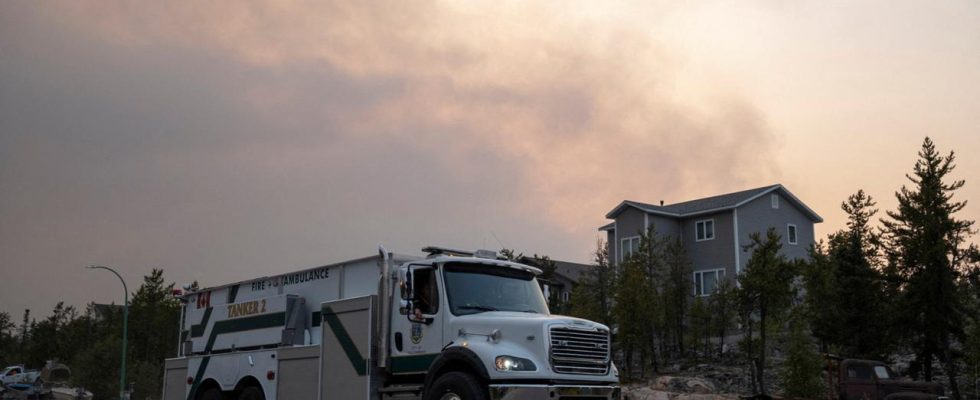Canada is currently experiencing its worst wildfire season on record. An area the size of Bavaria, Baden-Württemberg and North Rhine-Westphalia has already burned down. Now the fires are threatening the largest city in the Northwest Territories.
The news came late in the evening: Yellowknife, the capital of Canada’s Northwest Territories, is now also to be evacuated. With 20,000 inhabitants, it is by far the largest city in the area, which has a total of around 45,000 inhabitants. People should slowly get on their way, according to the authorities, the fire is still around 17 kilometers from the city. But they should all be gone by Friday afternoon.
Michael St. Amour and his town Enterprise didn’t have that much time: “Around 85-90 percent of the community has disappeared,” says the city’s mayor. He started bringing the bad news to the local residents. “It’s difficult because we’re very close in the city. But as long as we’re fine and breathing, we’ll be fine.”
St. Amour is always completely overwhelmed by what has happened. The place for which he is responsible is in ruins – after a barrage of fire rushed through there on Sunday. More than 100 people had to be brought to safety very quickly. For many of them, it’s a traumatic experience, as they tell Canadian broadcaster CBC: “When we left Enterprise, you could see it getting darker and darker. It looked like Armageddon,” Noeline Villebrun recalls.
And Ashley Gresl, whose parents were taken to safety, remembers: “You can hear that everyone was really panicking. And my mother was trying to coordinate my father through the flames.”
region in state of emergency
The authorities had already declared a state of emergency for the entire Northwest Territories on Tuesday evening. This gives them the chance to act differently, to call for help from Ottawa and to order evacuations at short notice – like Yellowknife is doing now. Because the situation is changing quickly and the area itself is a major challenge. Most of the affected villages are hundreds of kilometers apart, and some roads have already been damaged. Eyewitnesses report burning asphalt. The evacuations must therefore be carried out by military aircraft.
It’s a region in a complete state of emergency, reports Garth Carman, who had fled to safety from Hay River a few days ago with his wife Linda: “The worst thing was that the internet, mobile phones and landlines were down, so that entire area had no way of communicating at all.” For example, you couldn’t withdraw money from a bank, buy groceries or gas, and you couldn’t communicate.
A total of around 26,000 people are now to be evacuated. The armed forces are also deployed for this purpose and provide support with military pilots and soldiers in the field. The small town of Hay River on Great Slave Lake has become a hub, from where the evacuation flights to the neighboring province of Alberta start.
Three evacuations in two years
This is not the first time many Canadians have been forced to leave their homes. Neither have Garth and Linda: “In the past two years, we have already been evacuated twice from Hay River. And this is our third full evacuation. It all happens so quickly,” says Linda.
This creates dramatic situations: “When Hay River was evacuated, Linda and I were in separate vehicles. We got lost in the confusion,” Garth recalls. “And we spent three days looking for each other.” The couple are now staying in Valleyview, Alberta.

